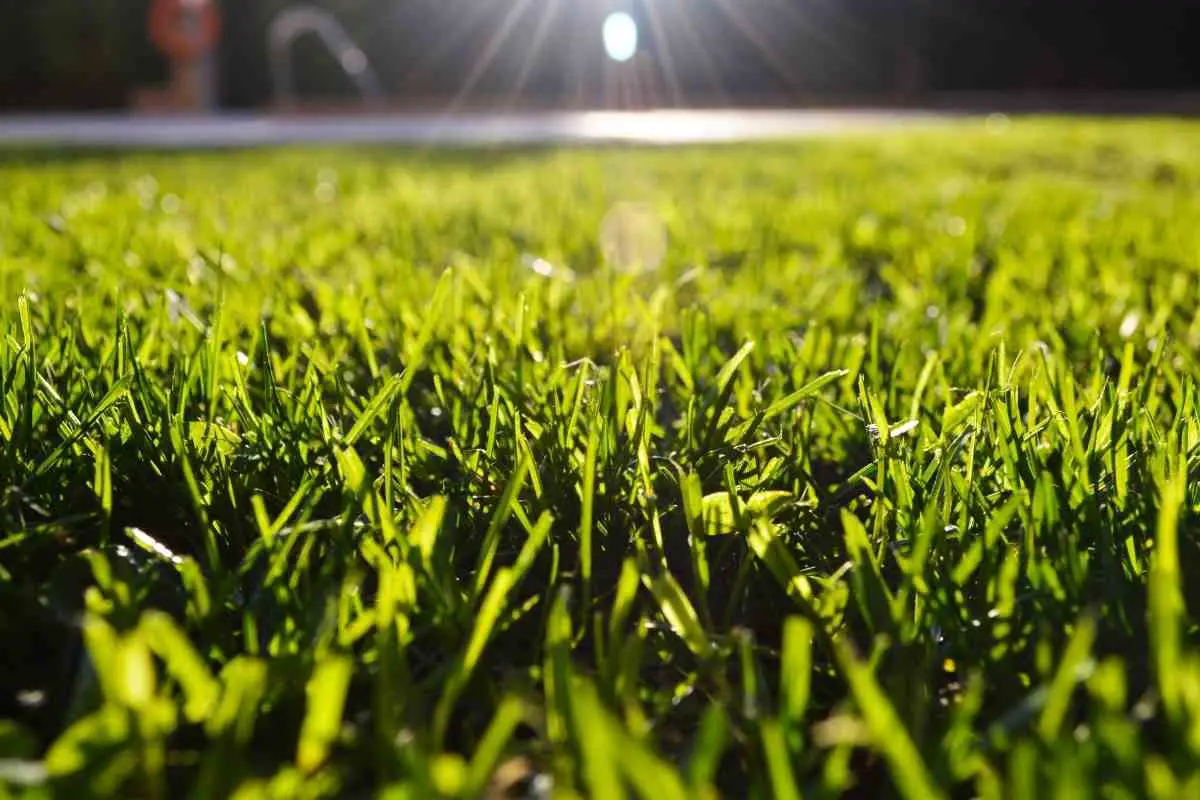Nitrogen, an infinite element in the air, is vital to plant growth and development.
What does nitrogen do for lawns?
It promotes vegetative growth, ensuring your lawn maintains its beautiful green color. When grass lacks this crucial nutrient, it turns brown and loses its attractiveness.
Due to the importance of nitrogen, homeowners, sports field managers, and every person who loves green grass feed never lack this nutrient.
Although nitrogen is the most copious gas in the atmosphere and soil holds a substantial amount of the element, plants can’t utilize it in its pure form.
So instead, they rely on nitrogen-fixing bacteria to convert it into an absorbable form.
Common sources of nitrogen
Here’s how you can feed nitrogen to your grass to make it green and healthy.
Organic sources
The most common organic nitrogen source is manure from animal waste.
Other sources include activated sewer sludge and natural products like fish meal and guano.
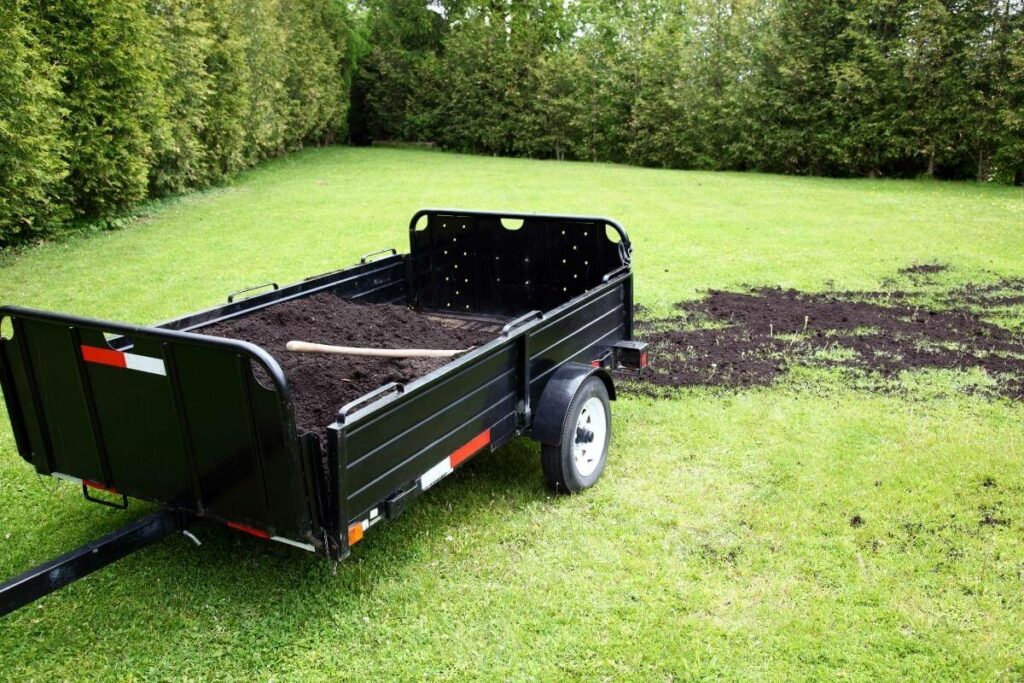
Organic nitrogen results from the breakdown of organic matter by microorganisms.
The process releases by-products slowly into the soil, ensuring that there’s zero risk of leaching.
As a Result – Organic sources have negligible burn potential and can’t hurt your grass, regardless of the applied quantity.
Besides feeding your grass, organic nitrogen sources contribute to better soil health.
Unlike other fertilizers, they don’t saturate the soil and make it infertile.
Inorganic sources
The most popular nitrogen source is inorganic fertilizers.
They’re popular because of availability and convenience – most farmers would buy ready made fertilizers rather than wait months for organic fertilizers to mature.
Which are the main nitrogen fertilizers?
The two main fertilizer types are quick and slow-release nitrogen fertilizers.
Quick-release fertilizers are soluble in water and readily available to plants.
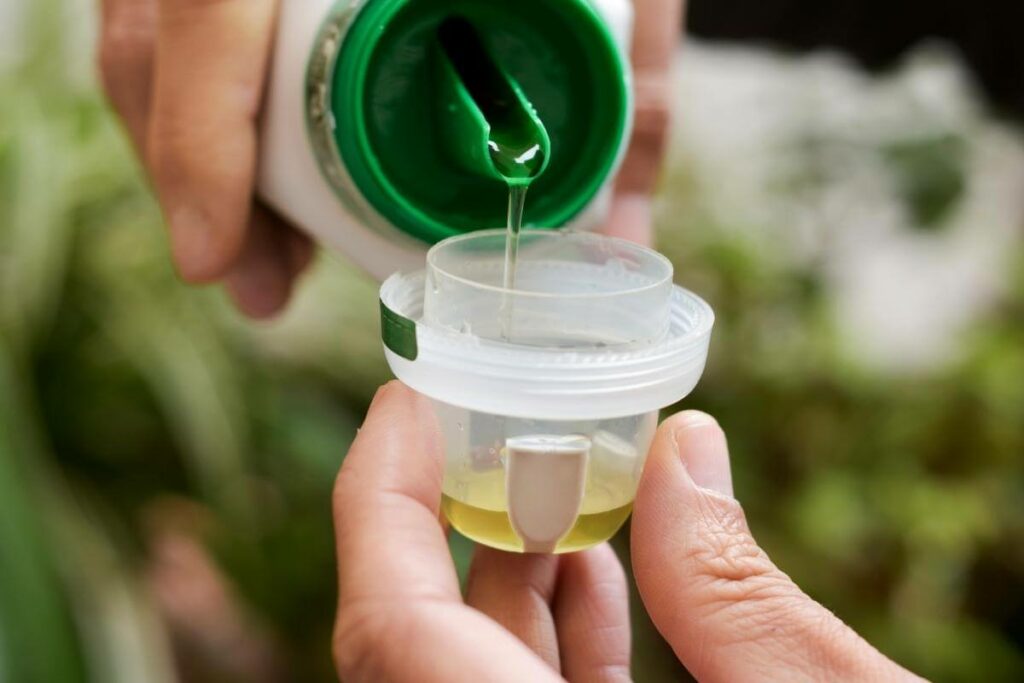
However, they act for a short period and are highly susceptible to leaching.
On the other hand, slow-release fertilizers work slowly and release their components over more extended periods.
As a result, they’re also less prone to leaching.
How much fertilizer is enough?
There is no firm response to this question since several factors determine how much nitrogen your grass needs.
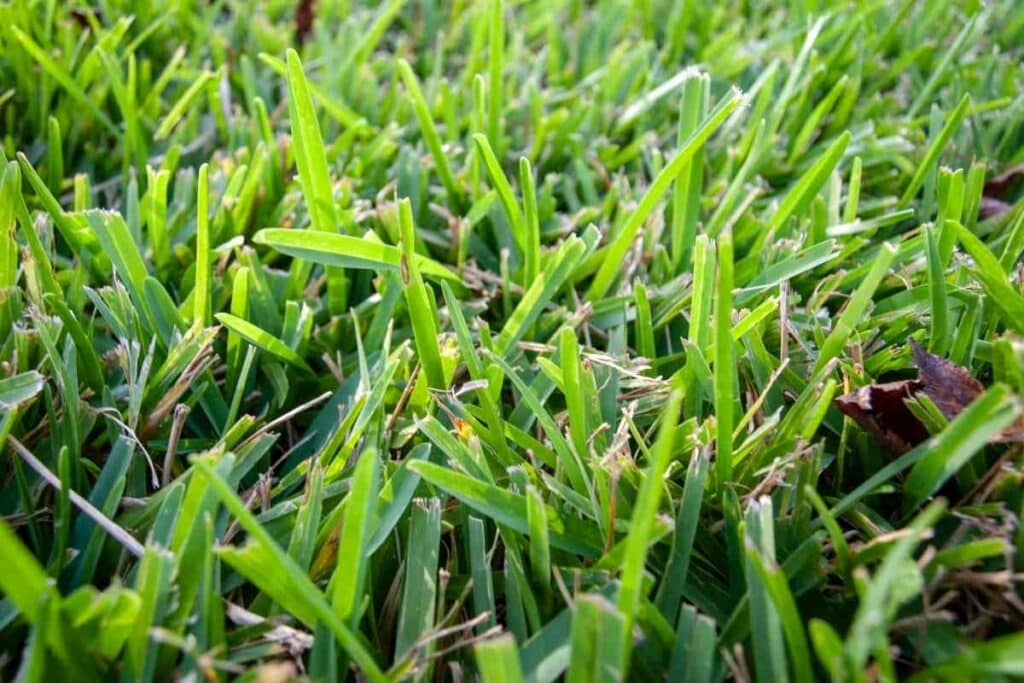
These factors include:
- Grass type – some grasses require more nitrogen than others. Read the planter’s guide to see how much your grass needs.
- Grass maturity – generally, new grass requires more nitrogen than established grass.
- Traffic – You’ll need more nitrogen if many people step on your lawn regularly.
- Shade – grass in an open field needs more nitrogen than grass in shaded areas.
- Nitrogen availability – if you leave cut grass on your lawn, you’ll require less nitrogen. This is because the clippings supply nutrients to the growing grass.
What’s the best time to apply nitrogen?
The best time to nitrify your lawn is during fall.
Although spring application has some benefits, many homeowners tend to overdo it, resulting in adverse effects.

Autumn is the ideal time to apply nitrogen fertilizer because most grasses sprout during this season.
However, the growth rate reduces in fall, making it ideal for applying fertilizer and spurring faster development.
Specifically, the plants use some nitrogen for growth and store the rest in the roots.
Synthetic sources
Synthetic nitrogen is mainly available in urea and its derivatives, including:
- isobutylidenediurea
- resin-coated urea
- and sulfur-coated urea
In its pure form, urea is a quick-releasing agent.
However, it acts slowly when combined with other compounds—the release rate depends on the coating’s thickness, soil moisture content, and temperature.
Nitrogen deficiency
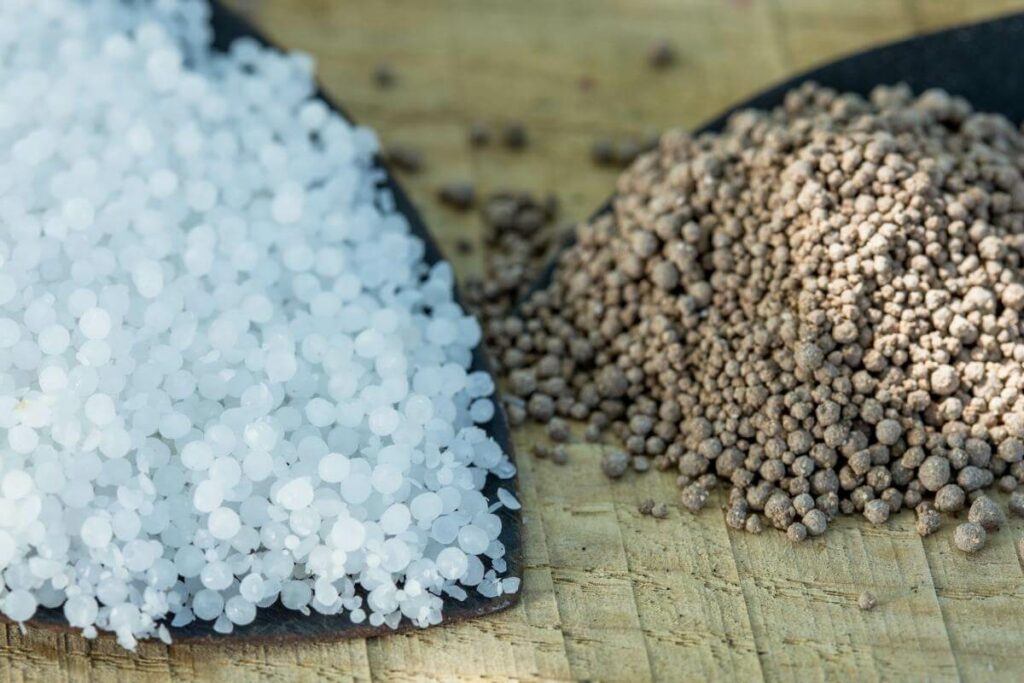
Nitrogen is a macronutrient whose deficiency causes significant problems to grass.
But what causes deficiency?
What are its symptoms?
How do you treat it?
Causes of nitrogen deficiency
The most common causes of nitrogen deficiency include:
- Inadequate nitrogen supply – grass suffers when your soil has little nitrogen, and you don’t apply fertilizer.
- Nitrogen depletion – if you vegetative plants repeatedly, nitrogen levels reduce naturally.
- Damaged roots – if the roots are damaged, grass can’t absorb nutrients, resulting in a deficiency.
- Excess chloride, manganese, and potassium – these compounds prevent nitrogen absorption when available in high quantities.
- Incorrect pH – the acidity or alkalinity of your garden soil affects nitrogen uptake.
Symptoms of nitrogen deficiency
The first and most common symptom of nitrogen deficiency is yellowing leaves.
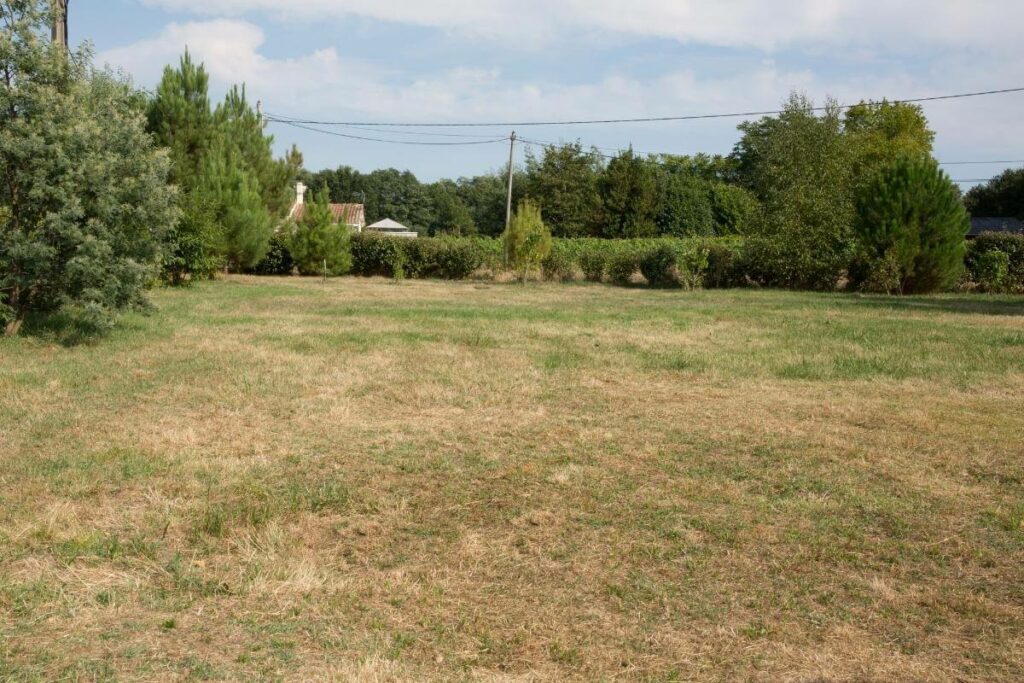
Nitrogen is vital to chlorophyll formation, and its absence means leaves lose their characteristic green color.
Over Time – The leaves turn brown and fall off. Additionally, nitrogen-deficient grass grows slowly. When the new leaves emerge, they look weak and unhealthy.
If left unattended, the grass loses its beauty and becomes a menace.
How to get rid of nitrogen deficiency
If you spot the symptoms mentioned above, the best reaction is to consult a professional.
They’ll assess your lawn and grass type and recommend the best remedy.
Generally, treatment involves fertilizer application in the roots or spraying leaves.
Organic matter like compost and manure are excellent long-term sources of nitrogen.
However, unlike sawdust, you shouldn’t use organic matter with high carbon levels.
This is because the soil’s microorganisms use nitrogen to break down the carbon, increasing the deficiency.
Side effects of nitrogen
Sometimes, nitrogen might adversely affect grass, soil, and the environment.
In most cases, such effects result from excessive application:
- First, too much nitrogen causes nutrient imbalance. This makes other nutrients ineffective, resulting in poor plant health. Also, excess nitrogen can cause the proliferation of harmful substances like aluminum.
- Secondly, nitrogen is soluble in water. When it dissolves, rainwater can carry it to large water bodies where it causes algae growth, called eutrophication. In some cases, excess nitrogen might hurt marine life.
- Lastly, nitrogen promotes plant growth. When applied in huge amounts, weeds and other unimportant plants thrive.
These plants might overwhelm your grass in the competition for nutrients, resulting in a deficiency.
Wrapping Up
Nitrogen is arguably the most crucial nutrient to a plant’s development.
It contributes to the development of chlorophyll, the substance that green plants use to produce food.
Without it, plants lack food, wither, and eventually die.
However, you should check the amount of nitrogen applied to your grass.
Excessive application has side effects that affect the plant, soil, and the environment.
